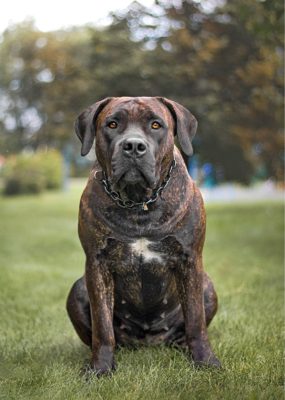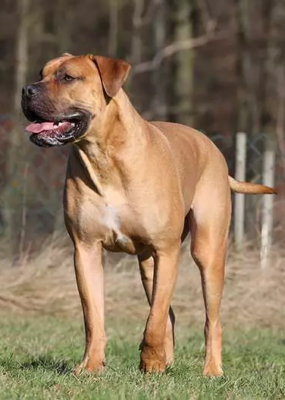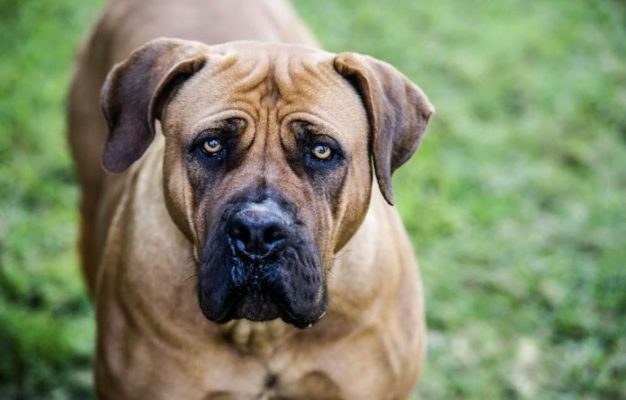Boerboel

The character of the Boerboel can be extremely different. There are even separate lines of breeding dogs in kennels, some of which are born as fighting dogs and others as a classic. In general, the Boerboel is very friendly and loyal. He adores his master and other family members. The dog gets along with children, allowing them various pranks. But it is necessary to control the process of play.
Table of Contents
Breed Information
| Another Name | South African Mastiff |
| Origin | South Africa |
| Height | Males 64-70 cm Females 59-65 cm |
| Weight | Males 65-80 kg Females 50-65 kg |
| Fur | Short, thick and smooth |
| Color | Beige (pale) or tiger. A signature black mask is present on the muzzle |
| Lifespan | 10-12 years |
| FCI Classification | Breeds outside the FCI classification |
| Group | Fight Dogs |
| Price | From $300 |
Breed Photos
Origin History
The Boerboel breed appeared in Africa in the seventeenth century, where the first settlers settled. At first, they were used as farm dogs that could adapt to any harsh conditions. Then they began to serve as soldiers in Assyria. Even armor was worn on the Boerboel. Thanks to Alexander the Great, who brought the pet from Egypt, the Boerboel made its way to Europe.
If we take apart the breed’s name, “Bur-Bull” translates literally as “Boer Bull. Given the power and strength of the dog, the name describes the breed perfectly. There are many breeds in the Boerboel blood, such as the Mastiff, Pointer, Greyhound, and Bulldog. Today this breed is bred in many countries, but the most prized are dogs from Africa.
Appearance
The Boerboel is very textured in appearance and has an athletic build. The head is large, the muzzle is wide and narrows to the tip of the nose. The teeth are the main feature of the breed; they are very strong and powerful. The eyes are wide apart, dark brown. The ears are triangle-shaped.
This breed has a very massive neck. The body of the Boerboel is square, with a strong back and lower back. The chest is deep, and the abdomen is moderately taut. The limbs have strong bones, expressing excellent muscularity. The hind legs are a little bit smaller than the front ones. The tail can be bought on demand of the owner. The coat is short, thick and smooth. The skin of the Boerboel is loose, so shallow wrinkles form on the forehead of the dog. Color is beige (pale) or tiger. There is a signature black mask on the muzzle.
Character
The character of the Boerboel can be extremely different. There are even separate lines of breeding dogs in kennels, some of which are born as fighting dogs and others as a classic.
In general, the Boerboel is very friendly and loyal. He adores his master and other family members. The dog gets along with children, allowing them various pranks. But it is necessary to control the process of play.
A Boerboel is wary of strangers but will not lunge at them. The pet can be very distant when the owner is talking to strangers, but literally, one wrong gesture and the dog will immediately be ready to protect him.
This serious fighter in adolescence is bound to try to set the owner up for himself. To prevent open conflict, you need to show your dog from the start who’s in charge.
This breed can make more than just a service or guard dog. It is important to exercise it constantly, keep it intelligent and talk to it often.
Care
The Boerboel does not get along well in an apartment, but if you provide him with plenty of exercises, the lack of a large area will not be felt. If the dog lives at home, control the comfort of its movement. On a slippery surface, the Boerboel’s paws can separate, and this will provoke injury. Despite its African roots, the Boerboel adapts to cold climates and can live in an enclosure.
Your pet does not need to be brushed every day or bathed often. Regular dog shampoo will do. It is best to wash when it is warm. You can massage his skin and comb out dead hair once a week. Inspect your Boerboel’s ears weekly and brush them once a month. Wash your dog’s eyes several times a week with chamomile decoction. Watch your dog’s oral hygiene and brush his teeth several times every three months if possible.
Training
Training for the Boerboel is an important step, if only for the safety of others. The breed does not like to be trained, but perseverance should be encouraged with a treat or a favorite toy. At the beginning of training, the Boerboel may often forget the learned rules of behavior or commands. It passes with age.
The pet may not understand prohibitions, continue to bark for no reason, or bite while playing. Do not raise your voice at him; repeat the command many times.
On a walk, the pet should walk calmly, not pull the owner. It is a very strong dog, so it is worth teaching it the “next to” command.
A Boerboel can be stubborn and refuse to follow commands. Such mood swings are difficult to deal with; you need to be on the same emotional wavelength as your pet. If your family has a child or another pet, the bulbul can become very jealous and do everything out of spite.
Common Diseases
The Boerboel has a strong immune system. His weakest point is the musculoskeletal system. Do not forget to monitor the pet’s nutrition, inspect its coat, and at the slightest abnormality, visit a specialist.
The Boerboel is prone to such diseases:
- bursitis;
- arthritis;
- dysplasia of the hip and elbow joints;
- dysbacteriosis.
Nutrition
The Boerboel’s diet is not much different from other dogs. Of all meats, beef suits him best. It is better not to give him poultry meat often. Include cartilage and bones in the diet; they are good for the pet. The breed should be fed dairy products, vegetables, cereals. But citrus fruits and milk should be avoided.
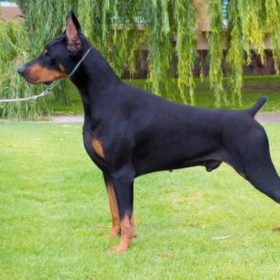 Dobermann
Dobermann Lapponian Herder
Lapponian Herder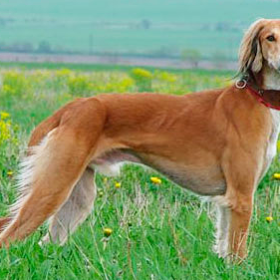 Tazy
Tazy Šarplaninac
Šarplaninac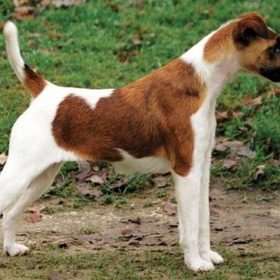 Smooth Fox Terrier
Smooth Fox Terrier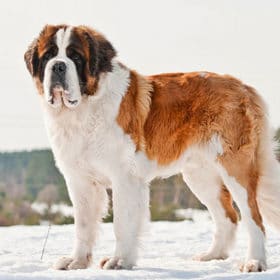 St. Bernard
St. Bernard